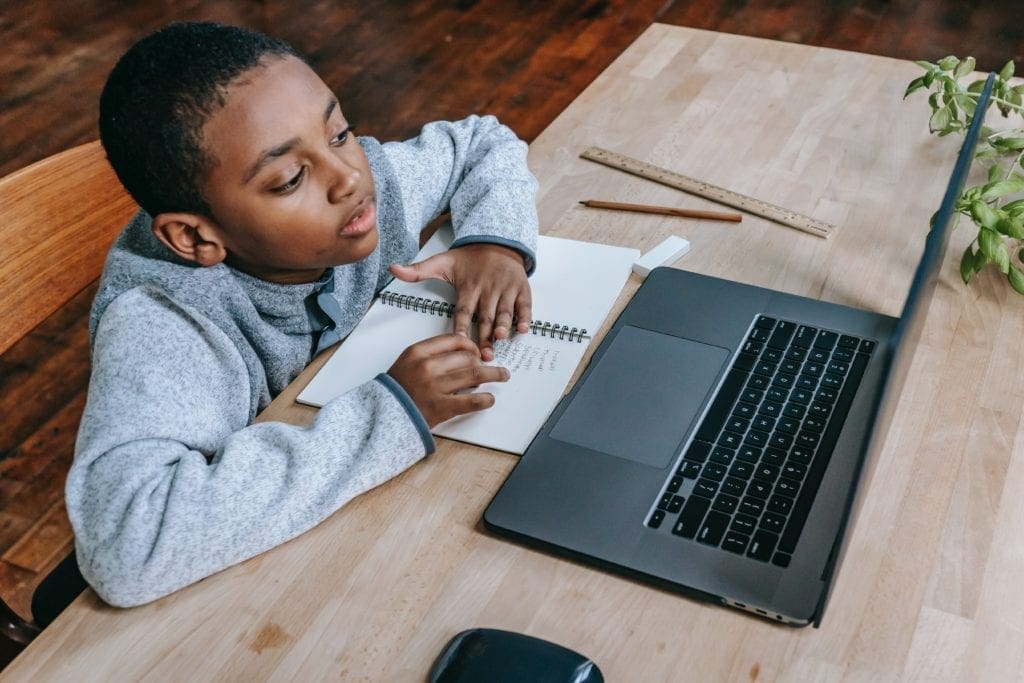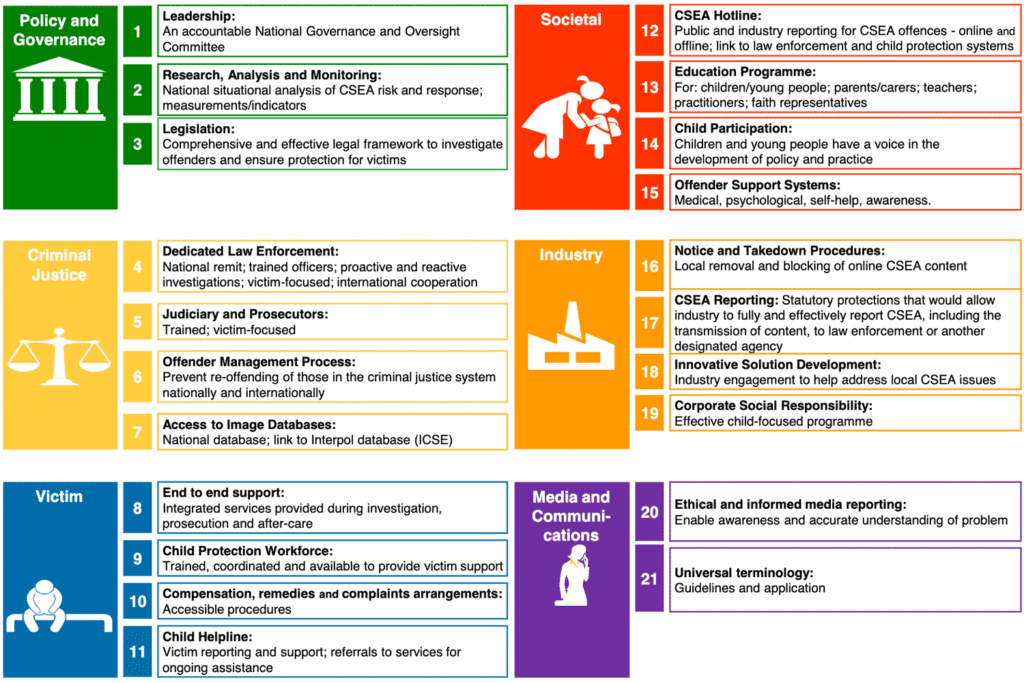Online safety – real world impact

On Safer Internet Day 2021, WePROTECT Global Alliance Executive Director Iain Drennan reflects on the challenge of tackling child sexual abuse across both online and offline environments.
Last month at a ‘together to end violence’ event discussing solutions to end child sexual abuse and exploitation the Secretary General’s Special Representative on Violence Against Children, Dr Najat Maalla M’jid said that “we must move out of silos addressing all forms of violence against children …we can’t divide sexual violence online and offline … our vision and action must be broad and start with prevention”.
This might seem strange to quote as an organisation focusing on online child sexual abuse on Safer Internet Day. But online harms do not stay on a screen; we care because they cause harm and trauma to real human beings, not pixels on a hard drive.
In 2017, a Swedish man was found guilty of serious sexual crimes over the internet against young girls in the USA, Canada and Great Britain. The case was the first of its kind in Sweden where a perpetrator was convicted of rape of children for deeds that occurred over the internet. Swedish research demonstrates the importance of viewing online sexual abuse as a serious form of sexual abuse even if the victim and perpetrator have not met outside the internet.
Research from the UK’s Independent Inquiry into Child Sexual Abuse demonstrates that the impacts of child sexual abuse can last for a lifetime, sometimes resulting in long-term illness and disabilities. These can include a wide range of physical health conditions, as well as mental health issues such as depression, anxiety disorders, and post-traumatic stress disorder (PTSD). Rates of self-harm have been shown to be as high as 49% among adult victims and survivors in treatment, and the risk of victims and survivors of child sexual abuse attempting suicide can be as much as six times higher than the general population.
Mobilising a strategic, coordinated and borderless response
And the response, too, does not stay on a screen. To effectively tackle this pervasive issue, technology and human interventions need to work seamlessly together. There is no quick fix and, as noted by Dr Maalla M’jid, prevention is always better than cure. WePROTECT Global Alliance, drawing on the knowledge and experience of our network, has developed a Model National Response framework, supporting governments and organisations to offer a holistic response to online-facilitated abuse, which can and should be aligned with a country’s wider efforts to combat child sexual exploitation and abuse.

However, as this is an inherently borderless crime, with perpetrators, victims and online platforms all potentially operating in different countries, we have also developed a Global Strategic Response framework, setting out key capabilities to inform transnational collaboration. All of these are designed to be tailored and adapted to the particular needs of the user, whether that be a government, international organisation or private sector company.
We are currently embarking on a large-scale project in partnership with UNICEF and the Global Partnership to End Violence Against Children to understand how the Model National Response framework is being used by government members of the Alliance. Engaging with 60 governments around the world, we will:
- Assess diverse national responses to online child sexual exploitation and abuse;
- Identify examples of good practice;
- Highlight gaps and challenges; and
- Inform the development of a future maturity model, facilitating tailored responses to address national requirements.
This is supported by our work specifically focusing on the technology industry and wider private sector, where there are unique capabilities and vulnerabilities associated with online abuse and exploitation. We’re working with the Technology Coalition to deliver their Project Protect commitments, focusing on driving collective action and increasing transparency and accountability. We are also working with the Australian, Canadian, New Zealand, UK and US governments and our private sector members to support implementation of a set of Voluntary Principles, publishing a ’by tech, for tech’ guide on our site this month.
Over the past year we have all seen how COVID-19 has increased the threat of abuse. Greater unsupervised internet use means children are likely to be exposed to greater risk of sexual exploitation online, including sexual coercion, extortion and manipulation by offenders. Exchange of self-generated material is also likely to increase, as children are now experiencing most of their social lives only online. However, as we noted in our intelligence briefing paper on the impact of the pandemic, it has only accelerated pre-existing trends.
For children in particular, ‘digital natives’ see their online and offline lives as a seamless whole. It means that the distinctions between their offline and online lives, in terms of work, learning and socialisation are increasingly blurred. And that is affecting crimes against children. The UK Centre of expertise on child sexual abuse noted that “online interaction is now so ubiquitous that it is likely to feature in almost all cases of child sexual abuse”; but the CSA Centre also recognised that “the online world has created new environments providing perpetrators with opportunities and channels to facilitate child sexual abuse”.
Why do we need a Safer Internet Day?
So in this fully networked world, why do we need a WePROTECT Global Alliance or a Safer Internet Day? Why is there still a need to focus on child sexual exploitation and abuse online?
- The sheer scale and rapidly developing global nature of online-facilitated abuse, as well as the additional stakeholders in the technology and private sectors that have a key role to play in the response means that this issue cannot be effectively addressed solely at a national level.
- Few, if any, organisations have the capability and capacity to address the full extent and interconnected nature of all harms against children, online and offline. We still believe this is an underreported and hidden issue in many parts of the world. There is a need to focus on areas of especially heightened risk, in particular in the countries with both the largest child populations and fastest growth in online connectivity.
- The issue of child sexual exploitation and abuse online sits across many interconnected and overlapping issues and spheres of harm: child sexual abuse, violence against children, sexual violence, online harms, child exploitation and gender-based violence. We seek to produce and collate the highly necessary and specific knowledge on this issue and ensure it is fed into the vital work being done across all of those intersecting wider landscapes.

There is largely untapped potential to share learning on the responses to other online harms, such as terrorism or cyber bullying, which is a major reason why we support and believe in Safer Internet Day – it offers a time to focus on this dimension and learn from each other at a global level and that is a powerful thing. A powerful motivation for action. My seven year old daughter has been learning about staying safe online this week, and it is inspiring to know she is learning alongside thousands of other children around the globe.
But those of us focusing on the online world must always remember our deep connections and links with wider violence against children, with abuse, neglect and other harms; with education and with health. WePROTECT Global Alliance is proud to be a member of the Global Partnership to End Violence Against Children, looking at the whole spectrum of risks against children. Some of our closest partners, like INTERPOL and UNICEF enable us to develop a holistic and balanced response. We will continue to deepen our connections with other partners and understand how the online world can be integrated within the wider landscape to deliver real change for our children, enabling them to take full advantage of all the opportunities that the internet can offer without the threat or harm of sexual abuse.
The views and opinions expressed in this article are those of the authors and do not necessarily reflect the official policy or position of WeProtect Global Alliance or any of its members.
Page last updated on 14th November 2024